Mercedes GLB vs Renault Express – Which car suits you better?
Two cars, one duel: Mercedes GLB meets Renault Express.
Which one wins in performance, efficiency and value for money? Find out now!
Costs and Efficiency:
When it comes to price and running costs, the biggest differences usually appear. This is often where you see which car fits your budget better in the long run.
Renault Express has a significantly advantage in terms of price – it starts at 17100 £, while the Mercedes GLB costs 40500 £. That’s a price difference of around 23384 £.
Fuel consumption also shows a difference: Renault Express manages with 4.60 L and is therefore evident more efficient than the Mercedes GLB with 5.60 L. The difference is about 1 L per 100 km.
Engine and Performance:
Under the bonnet, it becomes clear which model is tuned for sportiness and which one takes the lead when you hit the accelerator.
When it comes to engine power, the Mercedes GLB has a clearly edge – offering 320 HP compared to 102 HP. That’s roughly 218 HP more horsepower.
In acceleration from 0 to 100 km/h, the Mercedes GLB is clearly quicker – completing the sprint in 5.50 s, while the Renault Express takes 11.90 s. That’s about 6.40 s faster.
In terms of top speed, the Mercedes GLB performs clearly perceptible better – reaching 250 km/h, while the Renault Express tops out at 167 km/h. The difference is around 83 km/h.
There’s also a difference in torque: Mercedes GLB pulls clearly perceptible stronger with 400 Nm compared to 240 Nm. That’s about 160 Nm difference.
Space and Everyday Use:
Cabin size, boot volume and payload all play a role in everyday practicality. Here, comfort and flexibility make the difference.
Seats: Mercedes GLB offers clearly more seating capacity – 5 vs 2.
In curb weight, Renault Express is noticeable lighter – 1296 kg compared to 1640 kg. The difference is around 344 kg.
In maximum load capacity, the Renault Express performs decisively better – up to 3300 L, which is about 1495 L more than the Mercedes GLB.
When it comes to payload, Renault Express noticeable takes the win – 700 kg compared to 500 kg. That’s a difference of about 200 kg.
Who comes out on top?
Overall, the Mercedes GLB shows itself to be wins the duel decisively and secures the title of DriveDuel Champion.
It convinces with the more balanced overall package and proves to be the more versatile choice for everyday use.
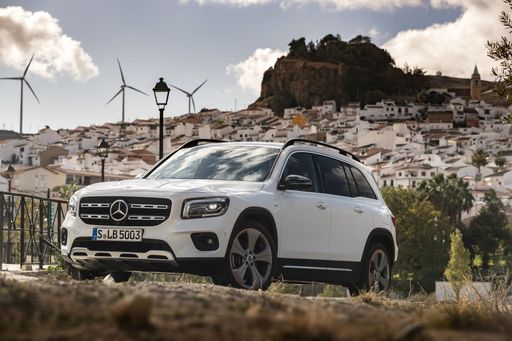
Mercedes GLB
Mercedes GLB
The Mercedes-Benz GLB exudes a robust yet sophisticated presence, combining the versatility of an SUV with the elegance the brand is renowned for. Its spacious interior is thoughtfully designed to accommodate modern lifestyles, offering flexibility and comfort for both drivers and passengers. With advanced technology seamlessly integrated throughout, the GLB ensures a driving experience that is both dynamic and intuitive.
details @ group-media.mercedes-benz.com
@ group-media.mercedes-benz.com
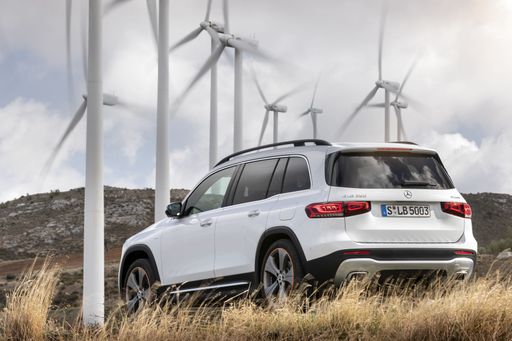 @ group-media.mercedes-benz.com
@ group-media.mercedes-benz.com
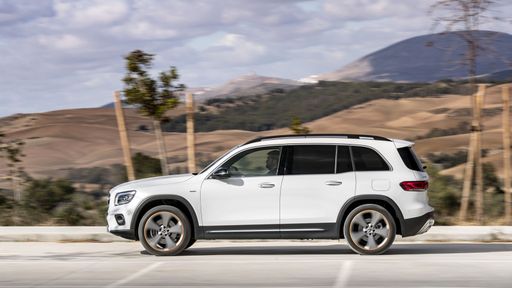 @ group-media.mercedes-benz.com
@ group-media.mercedes-benz.com
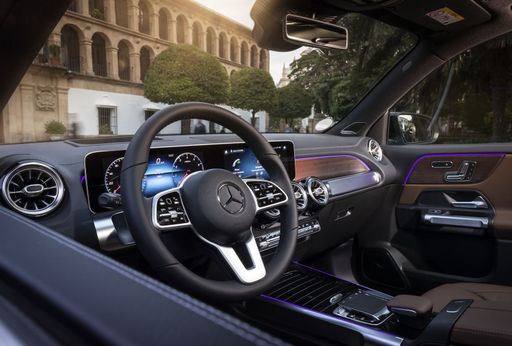 @ group-media.mercedes-benz.com
@ group-media.mercedes-benz.com
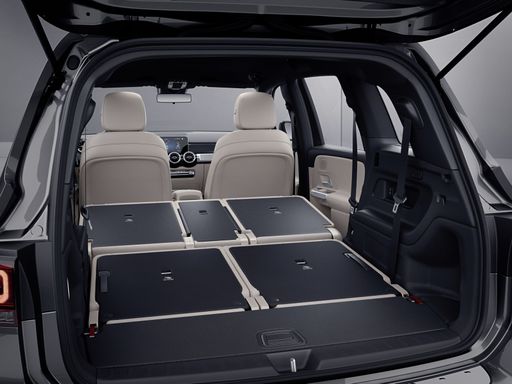 @ group-media.mercedes-benz.com
@ group-media.mercedes-benz.com
Renault Express
The Renault Express brings a fresh design to the van segment, combining practicality with modern styling cues. Its spacious interior and clever storage solutions make it an ideal choice for both business and leisure purposes. With a focus on comfort and functionality, this vehicle stands out as a versatile option for those in need of reliable transportation.
details

|
|
|
|
|
Costs and Consumption |
|
|---|---|
|
Price
40500 - 65300 £
|
Price
17100 - 19500 £
|
|
Consumption L/100km
5.6 - 9 L
|
Consumption L/100km
4.6 - 6.6 L
|
|
Consumption kWh/100km
-
|
Consumption kWh/100km
-
|
|
Electric Range
-
|
Electric Range
-
|
|
Battery Capacity
-
|
Battery Capacity
-
|
|
co2
146 - 204 g/km
|
co2
121 - 149 g/km
|
|
Fuel tank capacity
52 - 60 L
|
Fuel tank capacity
50 L
|
Dimensions and Body |
|
|---|---|
|
Body Type
SUV
|
Body Type
Cargo Van
|
|
Seats
5
|
Seats
2
|
|
Doors
5
|
Doors
4
|
|
Curb weight
1640 - 1820 kg
|
Curb weight
1296 - 1390 kg
|
|
Trunk capacity
565 - 570 L
|
Trunk capacity
-
|
|
Length
4634 - 4650 mm
|
Length
4393 mm
|
|
Width
1834 - 1850 mm
|
Width
1775 mm
|
|
Height
1665 - 1692 mm
|
Height
1811 mm
|
|
Max trunk capacity
1800 - 1805 L
|
Max trunk capacity
3300 L
|
|
Payload
500 kg
|
Payload
575 - 700 kg
|
Engine and Performance |
|
|---|---|
|
Engine Type
Petrol MHEV, Diesel
|
Engine Type
Diesel, Petrol
|
|
Transmission
Automatic
|
Transmission
Manuel
|
|
Transmission Detail
Dual-Clutch Automatic
|
Transmission Detail
Manual Gearbox
|
|
Drive Type
Front-Wheel Drive, All-Wheel Drive
|
Drive Type
Front-Wheel Drive
|
|
Power HP
116 - 320 HP
|
Power HP
75 - 102 HP
|
|
Acceleration 0-100km/h
5.5 - 11.5 s
|
Acceleration 0-100km/h
11.9 - 16.3 s
|
|
Max Speed
188 - 250 km/h
|
Max Speed
100 - 167 km/h
|
|
Torque
230 - 400 Nm
|
Torque
200 - 240 Nm
|
|
Number of Cylinders
4
|
Number of Cylinders
4
|
|
Power kW
85 - 235 kW
|
Power kW
55 - 75 kW
|
|
Engine capacity
1332 - 1991 cm3
|
Engine capacity
1332 - 1461 cm3
|
General |
|
|---|---|
|
Model Year
2025
|
Model Year
2021
|
|
CO2 Efficiency Class
E, F, G
|
CO2 Efficiency Class
D, E
|
|
Brand
Mercedes-Benz
|
Brand
Renault
|
What drivetrain options does the Mercedes GLB have?
Available configurations include Front-Wheel Drive or All-Wheel Drive.
The prices and data displayed are estimates based on German list prices and may vary by country. This information is not legally binding.
